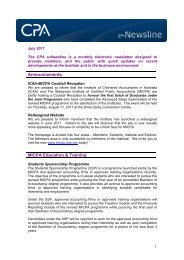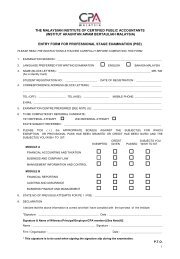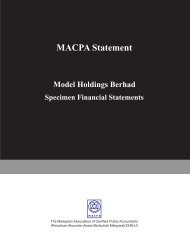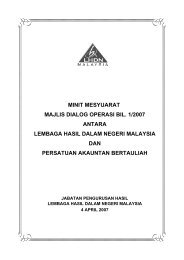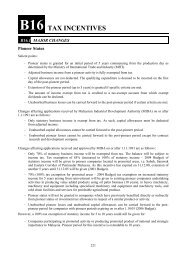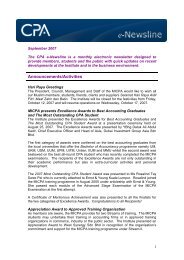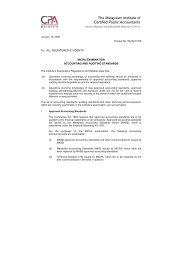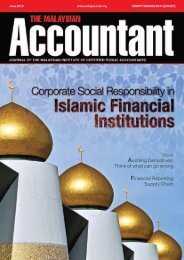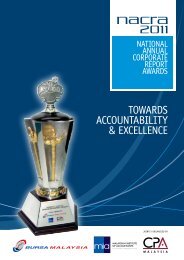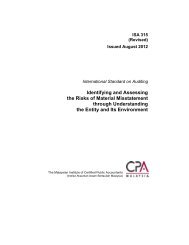november 2008 examination - The Malaysian Institute Of Certified ...
november 2008 examination - The Malaysian Institute Of Certified ...
november 2008 examination - The Malaysian Institute Of Certified ...
Create successful ePaper yourself
Turn your PDF publications into a flip-book with our unique Google optimized e-Paper software.
FEATURECorporate Governance Analysisin MalaysiaBY RHB RESEARCHGood corporate governance is always ablessing to investors, which heightens inimportance given the difficulty in aligningthe interest of shareholders withbondholders.As an example, company owners may think abusiness venture that could yield an expected return oninvestment (ROI) of 20% is appealing despite a failure rateof 70%. However, from the standpoint of bond investors,incremental benefits from taking excessive risk will mostlyaccrue to equity owners at the expense of lenders.In this case, strict financing covenants are an optionthat bondholders can use to protect themselves incurtailing moral hazard and reducing chances of businessowners from taking advantage of this asymmetric rewardprofile.In other instances, a complicated ownership structureand “poison pill” for corporate takeovers may help equityowners obtain a firm grip of company ownership. However,such practices may impede corporate takeovers, indulgepoor management and prejudice the interest of creditors.In the local bond market context, we highlight four broadcategories of poor corporate governance: non-complianceof information covenants; related party transactions andimproper payments; misappropriation of funds; andearnings manipulation.We offer some suggestions for investors to search fornascent signs of deteriorating corporate governance andearnings quality, including a company’s timelydissemination of information, growing related partytransactions, to be watchful for purposes and use of bondproceeds and potential signs of earnings manipulation.Broad corporate governanceissues in MalaysiaAt the root of finance principles, excess funds provided byinvestors feed through businesses which require financing,in exchange for gaining a certain expected rate of returnin future at the expense of sacrificing existing spendingpatterns.However, how can the suppliers of funds be assuredtheir funds will be put into productive projects, rather thanwww.micpa.com.myAugust <strong>2008</strong> | <strong>The</strong> <strong>Malaysian</strong> Accountant |7



